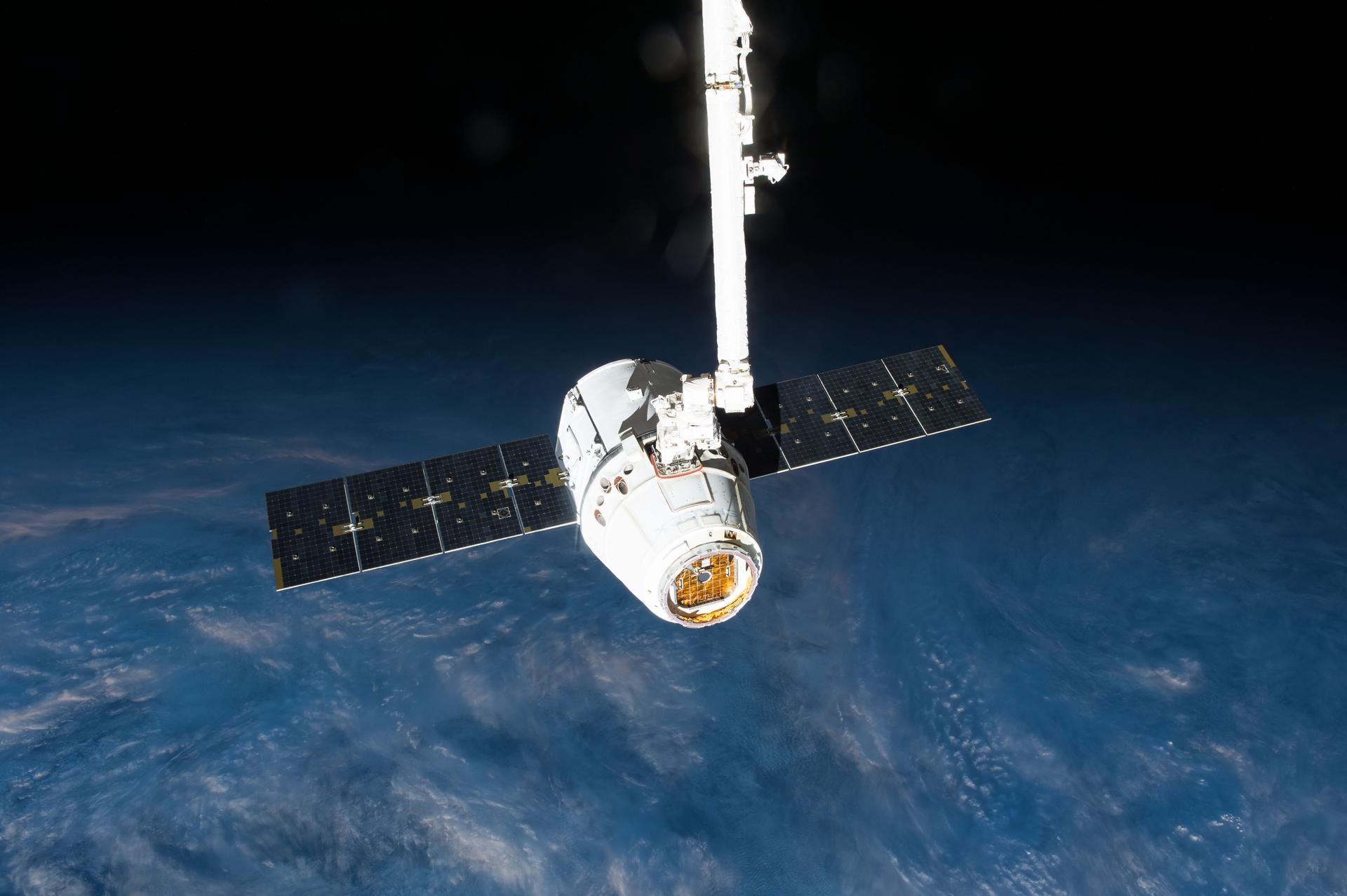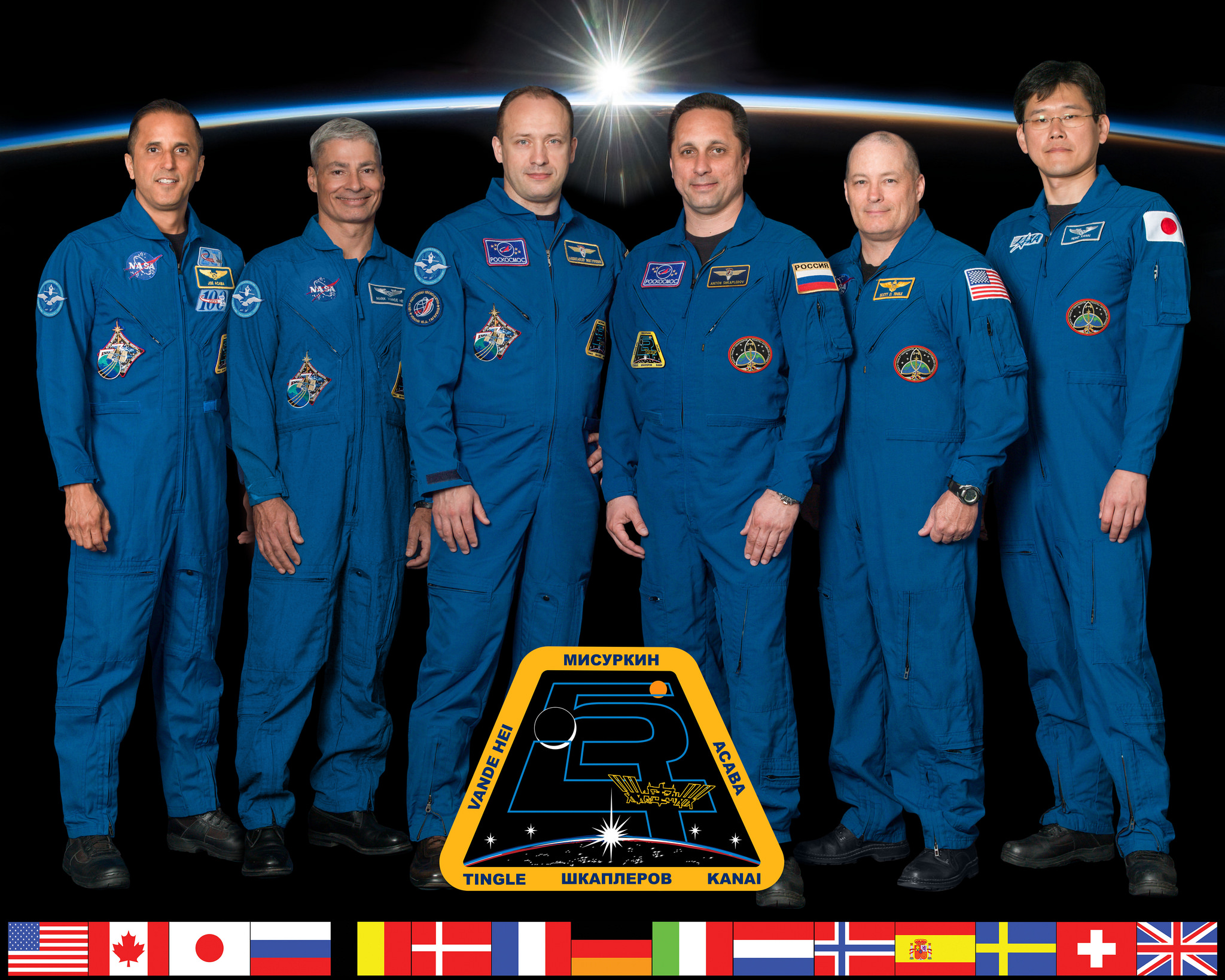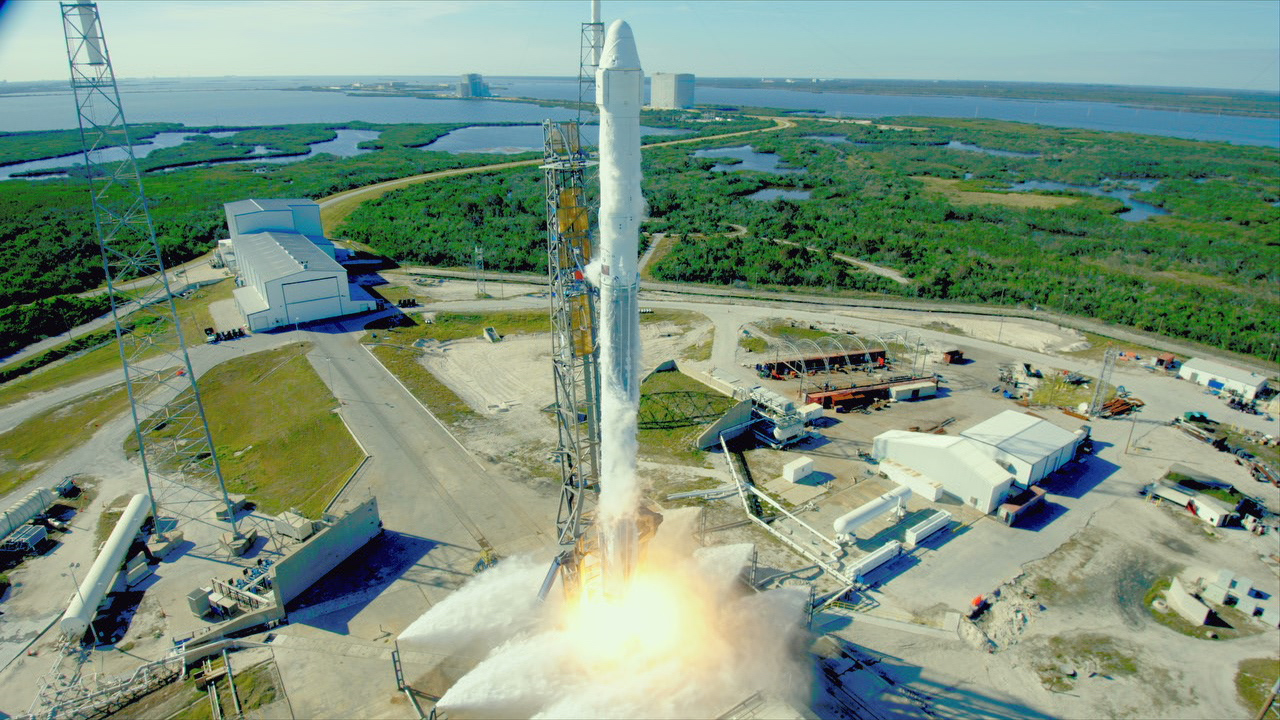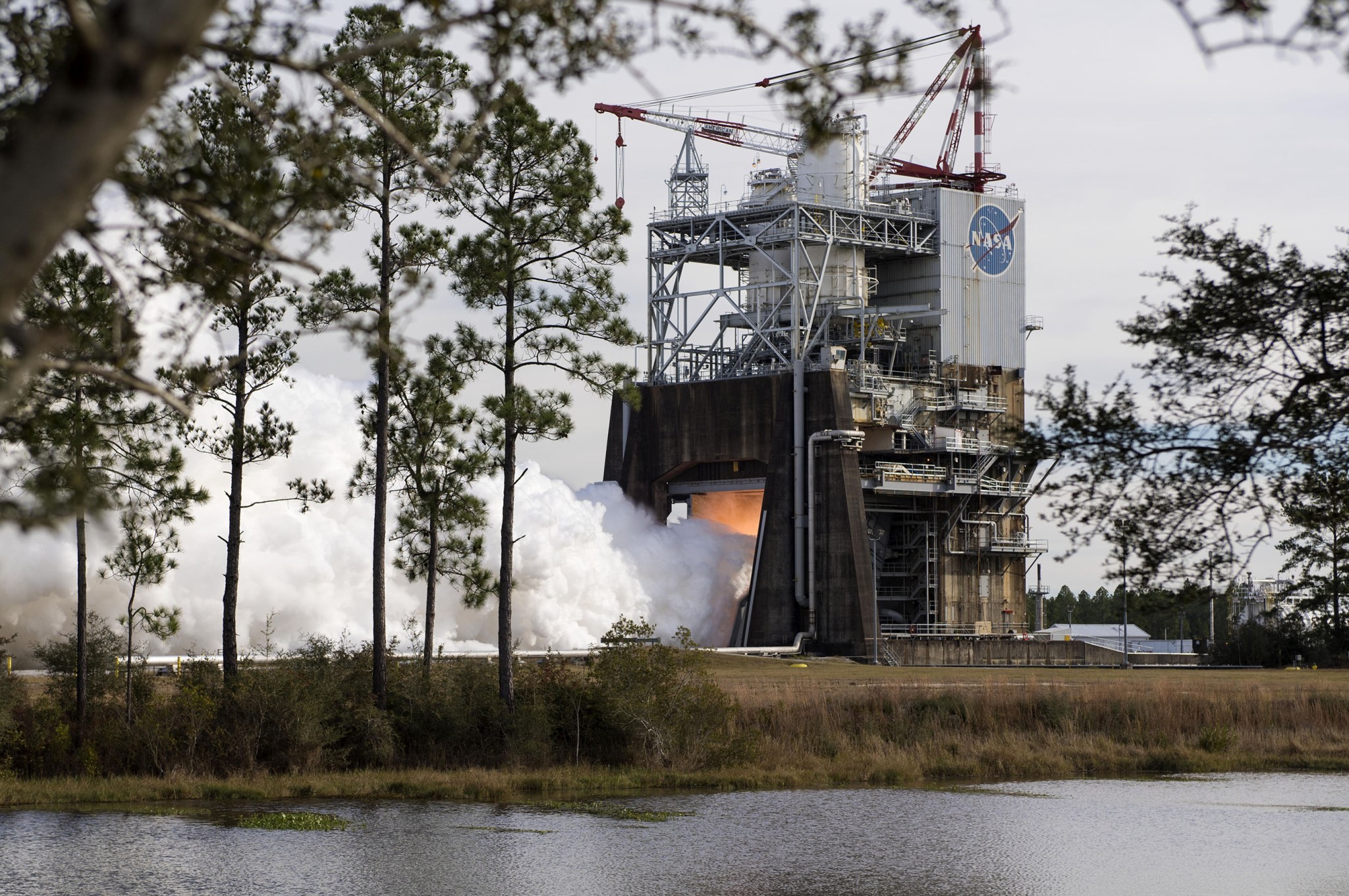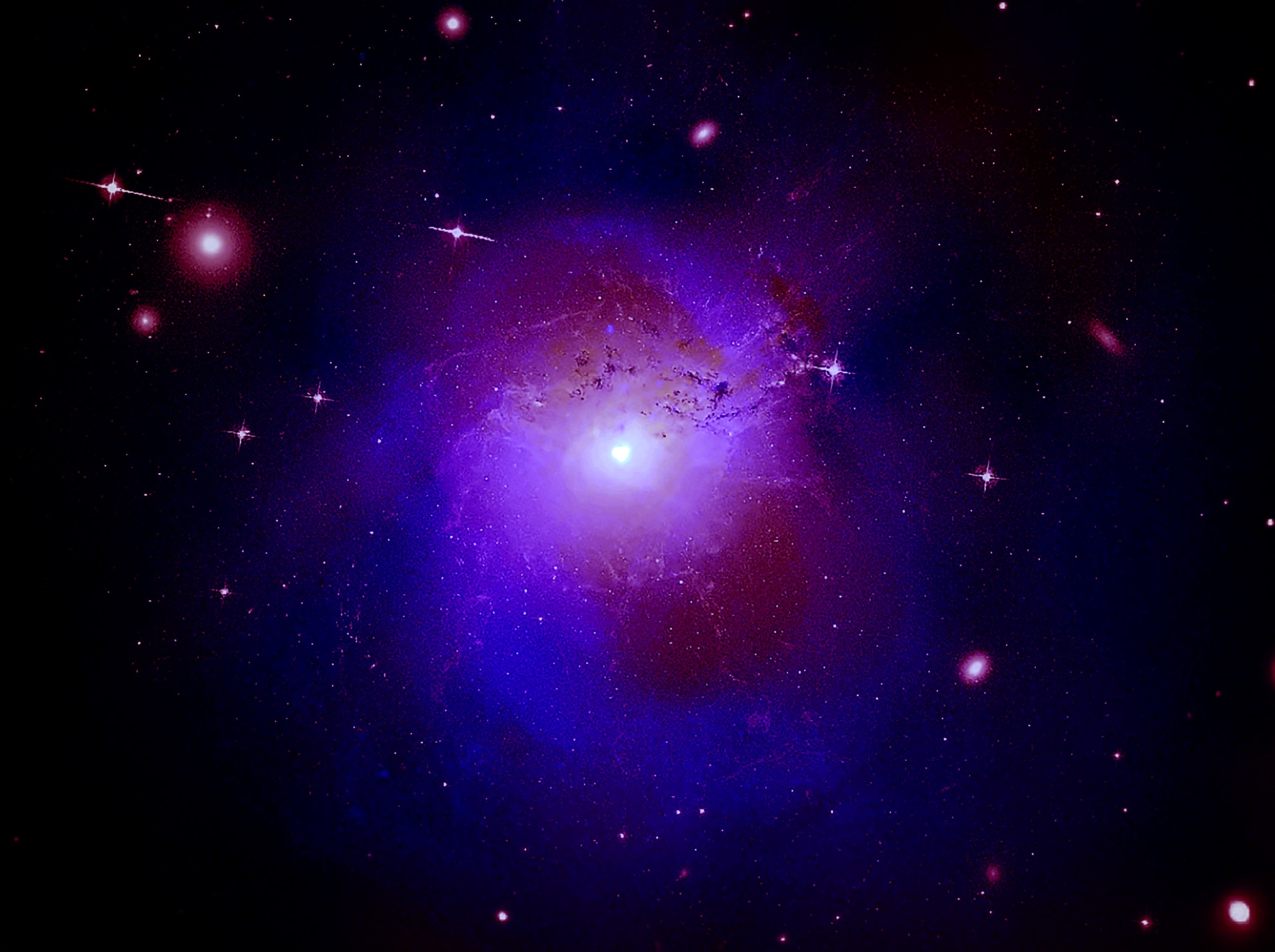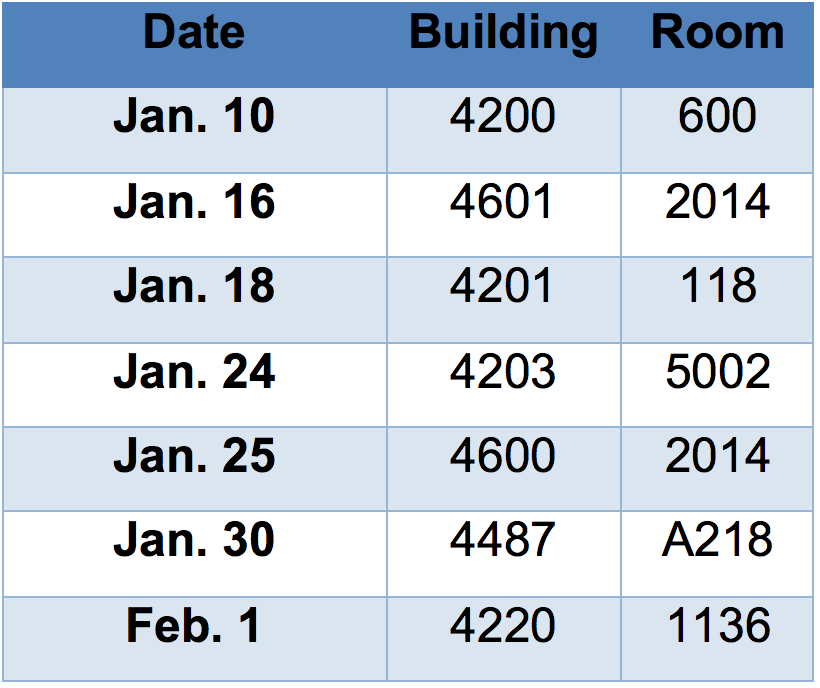In This Week’s Star
- The ‘Brains’ Behind NASA’s Deep-Space Rocket
- NASA, International Partners Wrap One Space Station Expedition, Begin Next Period of Discovery
- NASA Conducts Final RS-25 Rocket Engine Test of 2017
- NASA, Global Partners Ready New Research Facility for Space Station
- Perseus Cluster: A New Twist in the Dark Matter Tale
- Essential to the Mission: Wendy Sullivan
- Marshall Launches Quick-Tempo Facility Upgrades With 4610 ‘Facelift’
- REDSTAR Librarian to Host Lunch and Learns to Educate Workforce
- This Week in NASA History: Apollo 17 Splashes Down – Dec. 19, 1972
The ‘Brains’ Behind NASA’s Deep-Space Rocket
The huge hardware being built for NASA’s Space Launch System often grabs the spotlight, but the “brains” of the rocket — the avionics and software that will guide the rocket’s flight — direct all that power.
“Avionics tell the rocket where it should go, and how it should pivot the engines to keep on the right trajectory,” said Lisa Blue, avionics system manager in the SLS Program Office at NASA’s Marshall Space Flight Center.
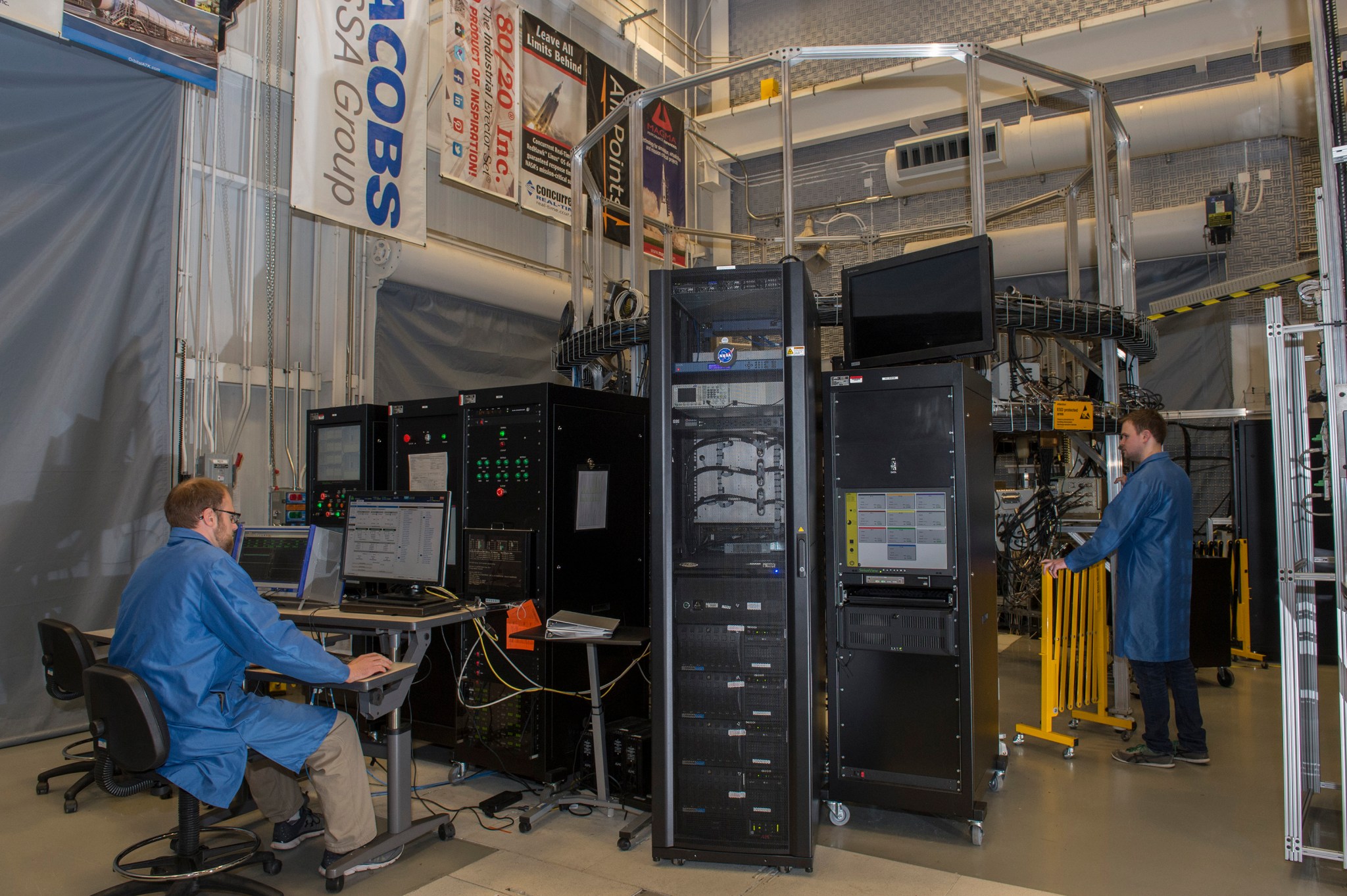
During the Space Launch System’s first eight minutes — from liftoff to separation of the 212-foot-tall core stage from the in-space stage and the Orion spacecraft — the main “brains” controlling the world’s most powerful rocket are the flight computers located in the core stage.
During an SLS flight, three computers guide the rocket’s flight and work together to decide what the rocket will do. Two of the three must work perfectly at all times — one cannot function alone. Of the avionics units, some control the navigation, some communicate with Orion and some control how the engines perform.
The SLS flight computers communicate with other avionics to control the four RS-25 engines and the two solid rocket boosters. The booster avionics, receiving commands from the flight computers, provide 80 percent of the control authority for the rocket during the first two minutes of flight.
Other parts of the rocket’s “nervous system” include the redundant inertial navigation unit, responsible for the rocket reaching its destination; the power system that serves as the “heart and blood” of the rocket body; and the sensors and effectors that tell the rocket what to do.
“We’ve proven out all aspects of the booster avionics during our system qualification tests by inserting faults in the system to verify all redundant booster functions,” said Eric Corder, Space Launch System Booster Control Systems manager at Marshall Space Flight Center.
Both the engines and the boosters have completed qualification testing — which signifies crucial electronic components have been tested — and qualification testing of the core stage is almost complete.
NASA’s prime contractor for the core stage, Boeing, will install the avionics in the core stage forward skirt, intertank and engine section at NASA’s Michoud Assembly Facility. They will undergo functional testing and later be tested along with the engine controllers during the green run test at NASA’s Stennis Space Center, the final test before launch. The booster avionics will be delivered to NASA’s Kennedy Space Center for installation in the booster and functionally checked out before launch.
The entire rocket’s avionics systems are currently being checked in NASA’s Marshall Space Flight Center’s Systems Integration Laboratory to verify they can all “talk” to each other, to Orion and to ground control computers.
“We are testing one piece at a time to ensure the segments operate properly before integration with the core stage,” said Blue.
The flight software is checked out by flying thousands of simulated flights in a variety of expected and abnormal conditions to confirm it is ready for spaceflight.
NASA, International Partners Wrap One Space Station Expedition, Begin Next Period of Discovery
ISS Expedition 53 is finished and Expedition 54 is well underway, with the successful return to Earth of three International Space Station crew members and the launches of rockets carrying fresh supplies and three new tenants.
Expedition 53 Commander Randy Bresnik of NASA officially handed over command of the orbiting research facility to Russian cosmonaut Aleksandr Misurkin Dec. 13. Then he and flight engineers Paolo Nespoli of the European Space Agency and Sergey Ryazanskiy of Roscosmos boarded the Soyuz and returned to Earth, landing in the bitter Central Asian winter cold of Kazakhstan Dec. 14.
During their time on station, the Expedition 53 crew contributed to hundreds of experiments in biology, biotechnology and other areas of study. Their tenure marked the first long-term increase in crew size — from three to four — on the station’s American segment, allowing NASA to maximize research time in orbit.
Misurkin and crewmates Mark Vende Hei and Joe Acaba of NASA will maintain operations aboard the station until the arrival of its new crew members: NASA astronaut Scott Tingle, Russian cosmonaut Anton Shkaplerov and Norishige Kanai of the Japan Aerospace Exploration Agency. They lifted off as scheduled Dec. 17 from Baikonur, Kazakhstan, and docked with the space station Dec. 19.
Paving their way was the Dec. 15 launch of a Falcon 9 rocket from Cape Canaveral Air Force Station in Florida. It carried a SpaceX Dragon spacecraft packed for the holidays with approximately 4,800 pounds of cargo and research equipment. Aboard were NASA’s Total and Spectral Solar Irradiance Sensor, or TSIS-1, which will aid understanding of the effects of solar variability on the Earth system; and the Space Debris Sensor, which will measure the orbital debris environment around the station, helping reduce risks to human life and critical hardware.
The cargo launch marks SpaceX’s 13th flight to the station under NASA’s Commercial Resupply Services contract. The spacecraft will return to Earth in January 2018, carrying more than 3,600 pounds of research, hardware and crew supplies.
Humans have lived and worked continuously aboard the International Space Station for more than 17 years, making research breakthroughs not possible on Earth that will enable long-duration human and robotic exploration into deep space. The station has hosted more than 2,100 investigations from researchers in more than 95 countries, and received visitors from more than 200 people from 18 countries. Follow space station research on Instagram and Twitter.
NASA Conducts Final RS-25 Rocket Engine Test of 2017
NASA engineers capped a year of Space Launch System testing with a final RS-25 rocket engine hot fire Dec. 13 at NASA’s Stennis Space Center. The 400-second test on the A-1 Test Stand was a “green run” test of an RS-25 flight controller. It marked the eighth RS-25 test of the year and the sixth flight controller to be tested for use on the SLS vehicle. The engine tested also included a large 3D-printed part scheduled for use on future RS-25 flight engines. The part is a beach-ball-sized pogo accumulator assembly that acts as a shock absorber to dampen vibrations, or oscillations, caused by propellants as they flow between the vehicle and the engine. Initial reports show the hardware performed as expected, opening the door for more components scheduled for future tests. The test was part of the SLS Program’s RS-25 affordability initiative, a collaborative effort between NASA and Aerojet Rocketdyne of Sacramento, California, to reduce the engine’s production costs by using new advanced manufacturing techniques while maintaining reliability and safety. Engineers were able to make the pogo accumulator with fewer welds using additive manufacturing, reducing the cost and time. NASA is testing the RS-25 engines and controllers to help power the SLS rocket, which is designed to send astronauts to the Moon, Mars and deep-space destinations. The RS-25 engines for the initial SLS flights are unused space shuttle main engines, modified to supply the added power needed for the larger, heavier rocket. A major part of that modification is the new engine controller that serves as the “brain” of the engine, communicating with flight computers to ensure engines are performing at needed levels. (NASA/Stennis Space Center)
NASA, Global Partners Ready New Research Facility for Space Station
By Rick Smith
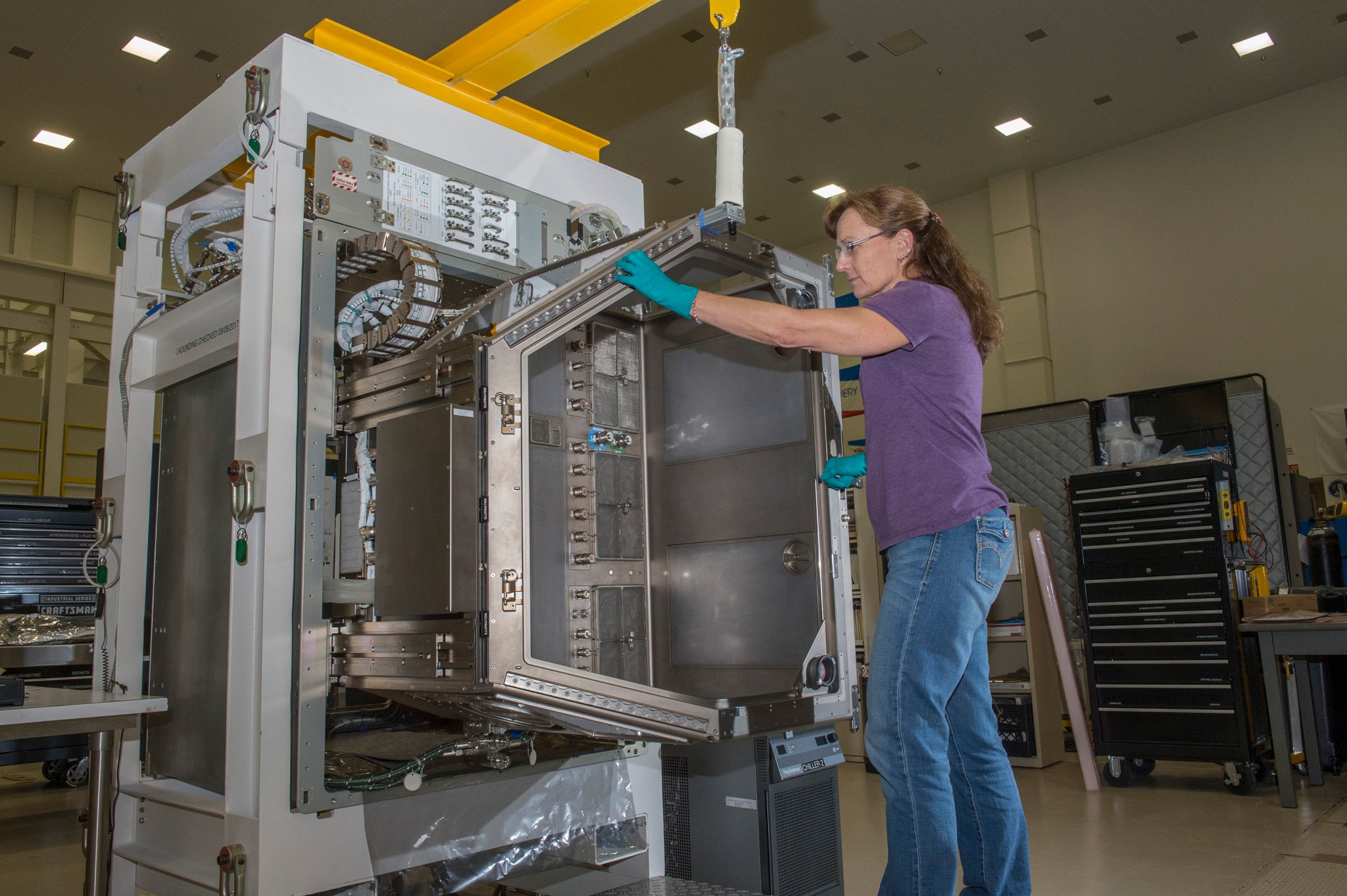
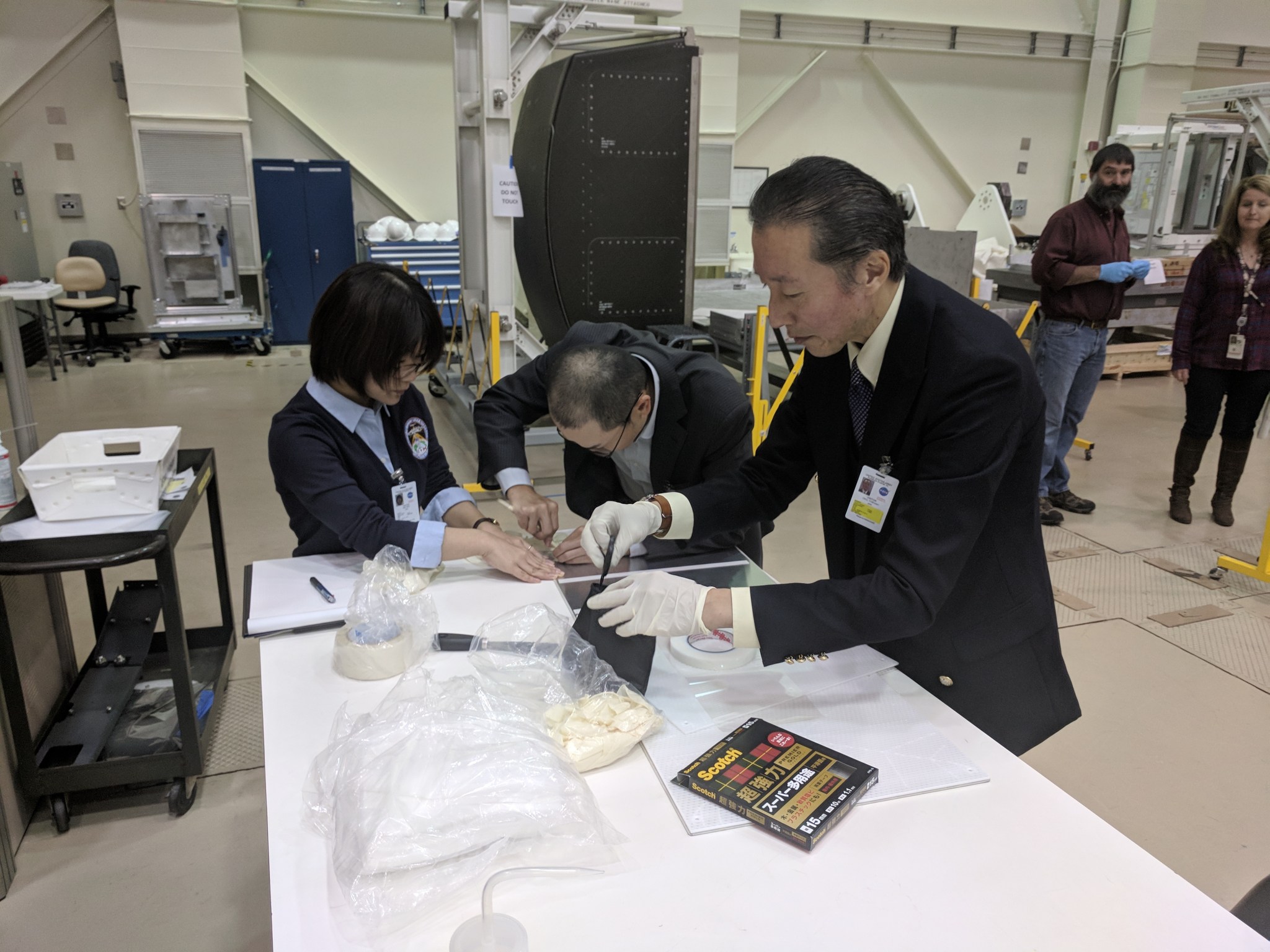
A new experiment facility undergoing testing at NASA’s Marshall Space Flight Center will be flown to the International Space Station in 2018. Experiments in the Life Sciences Glovebox will support research on the long-term impact of microgravity on human physiology, potentially leading to innovative techniques for protecting human explorers during missions into deep space, and also improving life on Earth.
The fully enclosed, acrylic-windowed facility is roughly the size of a large fish tank. It has 15 cubic feet of workspace, two glove ports on the front window and two each on the right and left sides. The access points permit up to two crew members, sometimes guided in real-time by scientists on Earth, to conduct one or more experiments simultaneously. The limited access points minimize contact with materials potentially hazardous to astronauts’ health or difficult for the station’s air scrubbers to filter out.
Scheduled for launch to the space station in August 2018, the glovebox is cousin to the veteran Microgravity Science Glovebox. That workhorse facility, installed on station in 2002 and currently housed in the “Destiny” laboratory, has seen high demand for access from scientists around the world vying for lab time involving the one-of-a-kind orbiting research apparatus. The heavy volume of requests led to development and construction of the new Life Sciences Glovebox, said Susan Spencer, deputy project manager for the new facility being developed at Marshall.
“For 15 years, the Microgravity Glovebox has been constantly in use and constantly in demand,” Spencer said. “That comes as no surprise, given its one-of-a-kind nature. But it was clear we needed to relieve the payload congestion, providing a second facility to better serve the research community competing for glovebox experiment time.”
The Japan Aerospace Exploration Agency built the new facility in partnership with the Dutch commercial firm Bradford Engineering several years ago. The partners recently revived the glovebox effort, updating heritage hardware and preparing it for flight, to answer the increased demand for research time. Marshall contributed the secondary structure to support the glovebox and its thermal control and power control systems.
“It’s been an amazing team effort to ready this hardware for launch, from the refinement of heritage JAXA hardware to the avionics design, plus integration and testing support from across Marshall’s Engineering Directorate,” Spencer said.
The new facility will be installed in a zero-gravity stowage rack in the station’s Japanese “Kibo” module. Featuring a power supply designed by Marshall, air filtration, adjustable lighting, video and data recording and real-time downlink capability, the glovebox will enable researchers to continuously observe and participate in their experiments, with nearly the same degree of oversight they enjoy in their own labs on Earth.
Marshall will finish its integration and testing of glovebox elements in coming months and ship the facility to Japan in March 2018, where it will undergo preparation for its launch to the station. The avionics package is set to be launched to the station next June, with ancillary hardware and critical spare parts manifested on various commercial spaceflights. The roughly 900-pound core facility itself will be last to be launched.
“The glovebox core facility, set to fly to space in a refrigerator-freezer rack modified by the Boeing Co., to accommodate the core facility packed in the foam clamshell, will be the largest soft-stowed payload ever flown,” Spencer said. “Soft-stowing,” or packing flight hardware in foam and then securely containing it for launch, is an efficient, low-cost alternative to the conventional approach of hard-mounting flight hardware inside the launch vehicle.
The first new experiment in the glovebox should be underway by November 2018. But Spencer said she’s already as proud of this endeavor as any flight project she’s supported in her nearly 30 years with NASA.
“My goal in life was always to build and fly hardware to space,” she said. “Seeing something you’ve had your hands on lift off and fly? Watching the launch of a flight mission you’ve contributed your best work to? There’s nothing like that experience.”
Marshall manages both gloveboxes for NASA and its international partners. As with all station science, the ISS Research Integration Office at NASA’s Johnson Space Center coordinates with researchers, while Marshall monitors round-the-clock science operations and communications from the Payload Operations Integration Center.
Smith, an ASRC Federal/Analytical Services employee, supports the Office of Strategic Analysis & Communications.
Perseus Cluster: A New Twist in the Dark Matter Tale
An innovative interpretation of observations of the Perseus galaxy cluster could help scientists fulfill the quest to understand dark matter, the mysterious invisible substance that makes up about 85 percent of matter in the universe.
A new study using data from Chandra X-ray Observatory, the European Space Agency’s XMM-Newton and Hitomi — a Japanese-led X-ray telescope — suggests that dark matter particles in the Perseus cluster are both absorbing and emitting X-rays. If confirmed with future observations, this may represent a major step forward in determining the nature of dark matter.
“We expect that this result will either be hugely important or a total dud,” said Joseph Conlon of Oxford University who led the new study. “I don’t think there is a halfway point when you are looking for answers to one of the biggest questions in science.”
The story of this work started in 2014, when researchers detected an unusual spike of intensity, known as an emission line, at a specific wavelength of X-rays (3.5 keV) in the hot gas within the central region of the Perseus cluster. They also reported the presence of this same emission line in a study of 73 other galaxy clusters.
In the subsequent months and years, astronomers have tried to confirm the existence of this 3.5 keV line. They are eager to do so because it may give us important clues about the nature of dark matter. However, it has been debated in the astronomical community exactly what the original and follow-up observations have revealed.
The latest work shows that absorption of X-rays at an energy of 3.5 keV is detected when observing the region surrounding the supermassive black hole at the center of Perseus. If the new model turns out to be correct, it could provide a path for scientists to one day identify the true nature of dark matter. A paper describing these results is available online.
For next steps, astronomers will need further observations of the Perseus cluster and others like it with current X-ray telescopes and those being planned for the next decade and beyond.
NASA’s Marshall Space Flight Center manages the Chandra program for NASA’s Science Mission Directorate in Washington. The Smithsonian Astrophysical Observatory in Cambridge, Massachusetts, controls Chandra’s science and flight operations.
Essential to the Mission: Wendy Sullivan
By Jonathan Deal
You never know how much you miss something until its gone.
That’s the lesson Wendy Sullivan learned after leaving NASA earlier this year to accept a position with the U.S. Army at Redstone Arsenal.
It didn’t take Sullivan long to realize where her heart is, though. After a brief stint with the Army, the 16-year NASA veteran is back at Marshall Space Flight Center as an Information Technology Specialist in the Office of the Chief Information Officer.
“I left NASA to go over there, stayed for about four-and-a-half months and realized I really miss NASA,” she said. “Yes, everybody knows NASA is the best place to work. But until you’ve seen how different it is on the outside, you don’t always have a real appreciation for what that means.”
Wanting to return to her information technology roots and seeking managerial experience, Sullivan had accepted a supervisory position with the Army Information Services Division. Less than five months later, Sullivan was back at Marshall as the Product Lead for the Collaboration line of business in the Agency Application Office.
“My office provides IT services to Marshall organizations as well as to the agency. My role is to provide services like SharePoint and ExplorNet, and to implement them for different users at the center,” she said. “Those users will talk with us about a need they have and we’ll talk about the tools available to them and work with them to get those implemented if it meets their needs.”
Sullivan began her career at Marshall in the Office of Human Capital, working with computer systems in human resources. Fifteen years later, she had morphed into a human resources specialist and was able to help oversee one of the biggest transitions in Marshall’s history.
“When NASA retired the shuttle,” she said, “I was able to work with the transition office to help find new jobs for all those folks whose jobs had changed. We didn’t have shuttle anymore, we didn’t have Ares; so, we had to get them transitioned to support a new mission, which turned out to be NASA’s Space Launch System. Right on the heels of the transition, I was tasked with supporting the creation of the SLS Program Office at Marshall.”
Working more than a decade in HR has allowed Sullivan an opportunity to meet a number of interesting people at NASA. She has visited all but one of the NASA centers across the United States.
“To be able to meet people at the different centers and learn about the different cultures has been a privilege,” she said. “Some are research centers, some are spaceflight centers. They all have different services they provide to the agency, so it’s really cool to see the facilities and learn about what they do at each.”
Deal, an ASRC Federal/Analytical Services employee and the Marshall Star editor, supports the Office of Strategic Analysis & Communications.
Marshall Launches Quick-Tempo Facility Upgrades With 4610 ‘Facelift’
By Rick Smith
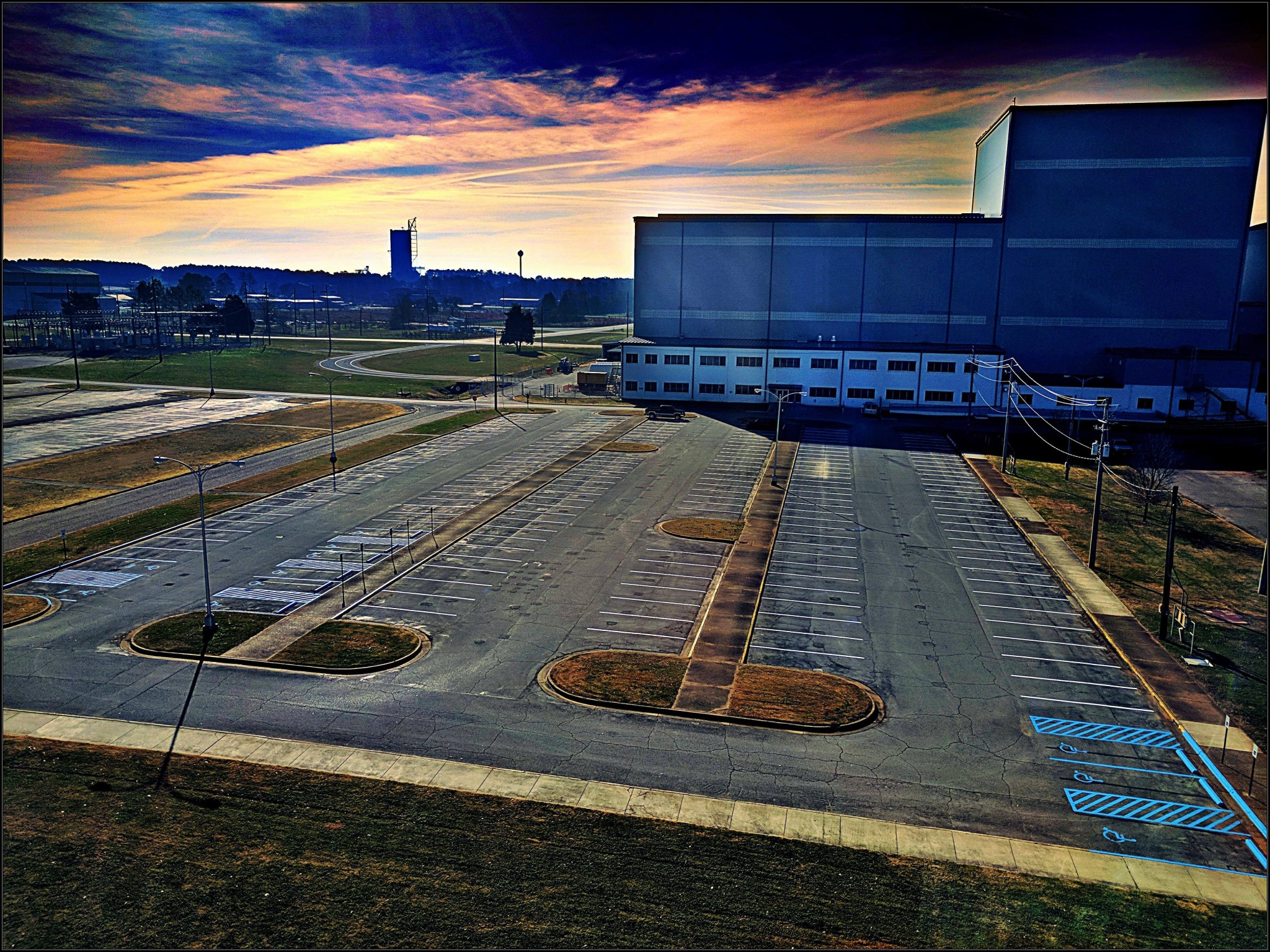
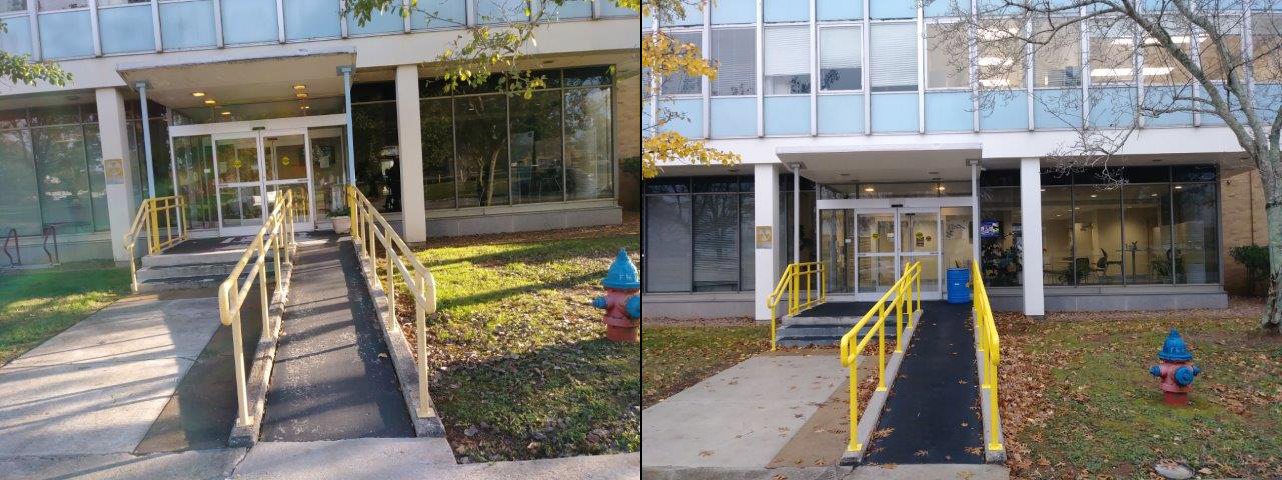
Facilities personnel at NASA’s Marshall Space Flight Center are undertaking a rapid-tempo refurbishment effort, giving one of Marshall’s oldest, continuously used facilities a welcome facelift.
Building 4610, built in 1959 and used ever since for various Marshall programs, is the primary office facility for management of Marshall’s multi-project operations capability, which includes the International Space Station‘s 24-hours-a-day, seven-days-a-week operations; development of the Space Launch System‘s engineering support center capability; and oversight of the Payload Operations Integration Center. More than 450 workers conduct Marshall’s space station-focused business in the approximately 70,000-square-foot facility.
Roy Malone, director of Marshall’s Office of Center Operations, identified 4610 as an excellent candidate for a new approach to updating older facilities, making team members more comfortable, safer and better able to tackle the work at hand.
“We had done some benchmarking at Stennis Space Center,” Malone said. “They were addressing cost-effective, short-term renovations of their buildings, using Tiger Teams. We thought we could bring that focused, rapid approach to some of our older facilities at Marshall.” A similar Tiger Team, including representatives from Marshall’s Facilities Management Office and key institutional organizations, was organized to identify and prioritize near-term needs and the means to execute vital renovations in Building 4610.
At the same time, results of a General Services Administration survey among Marshall workers had provided specific feedback for consideration by Malone; Tiger Team leader Michael Bradford, a Marshall facilities project manager; and Jeff Brown, manager of Marshall’s Facilities Management Office.
Malone said that office deserves special recognition for finding the funds necessary to execute the renovations, despite “very tight resources.”
“Based on feedback from team members, we knew Building 4610 would be a good candidate for this Tiger Team approach,” Malone said. Already scheduled for a complete heating, ventilation and air conditioning upgrade in the near future — part of Marshall’s ongoing, 20-year plan to upgrade the Marshall campus — Building 4610 clearly needed “some additional attention and TLC,” he added. Touring the site with Marshall senior leaders inspired facilities decision-makers to pull the Office of the Chief Information Officer into the mix as well, making the facelift a true joint effort among all relevant organizations overseeing the institution.
The restriping of the parking lot was just the start of planned upgrades, according to Sheila McDonald of Marshall’s Payload & Mission Operations Division, who serves as 4610 building manager and is facilitating the renovation work with the support of Bobby Watkins and Paul Gilbert, manager and deputy manager, respectively, of the Human Exploration Development and Operations Office; and Daryl Woods and Mark Richards, acting manager and deputy manager, respectively, of that office’s International Space Station Payload and Mission Operations Division.
Facilities personnel also cleaned and repaired some of the building’s aging sidewalks and cut back high grass around food truck parking areas, improving safety and neatening the overall appearance of the exterior lots. Inside the building, they replaced ceiling tiles and bathroom fixtures, repainted walls, secured loose cables, installed new lights and a filtered water fountain, cleaned carpets and stripped and waxed tiled floors. Early in the new year, 4610’s coffee shop also will be dramatically refurbished.
Team members’ responses to the renovations have been overwhelmingly positive, McDonald said. “We’re in the process of certifying 47 new trainees, with more on the way, for various positions supporting International Space Station operations,” she said — a much easier proposition when workers have a neater, brighter, more smoothly functioning facility in which to tackle the missions ahead.
“People feel good about walking in here in the morning,” she added. “It creates a stronger sense of unity and purpose.”
Malone agreed, once again citing the team effort to plan and execute the renovations. “Everyone went out of their way to work together and figure out a solution,” he said. “That’s the strength of the Marshall team — and the epitome of the NASA spirit.”
Smith, an ASRC Federal/Analytical Services employee, supports the Office of Strategic Analysis & Communications.
REDSTAR Librarian to Host Lunch and Learns to Educate Workforce
By Morgan MacMillan
Have you ever wondered what happens to the research material that goes in to developing a rocket engine part, or to determine how much it would cost to send a spacecraft into orbit? The REDSTAR Library, known more formally as the Resource Data Storage and Retrieval System Library at NASA’s Marshall Space Flight Center, may be able to help answer your questions.
REDSTAR librarian Mary Ellen Harris is on a mission to connect the Marshall workforce to information through a series of lunch-and-learns. Harris will be venturing to different buildings on the Marshall campus to demonstrate all the services the library has to offer.
The REDSTAR Library is a NASA-wide repository of cost, programmatic and technical data for many historical space and aeronautical projects. REDSTAR contains more than 50,000 documents, with about half available and searchable online using the SharePoint database.
REDSTAR’s document content spans approximately 200 manned and unmanned missions. Data ranging from entire programs to the component level is available down to the spacecraft bus, scientific instruments, engines, cost models, schedules and more.
Engineers at Marshall and other NASA centers use REDSTAR data as a resource to design new space systems or validate designs against historical records. The library is open and available to all NASA employees, both civil servants and some support contractors. Team members can apply for access by submitting a NAMS request.
“We are available to help all Marshall employees with their research in the best way we can,” said Harris. “In addition to other great Marshall libraries and repositories, REDSTAR is another resource to consider.”
Harris will demonstrate REDSTAR capabilities beginning in January with hour-long sessions starting at 11:30 a.m. as follows:
Questions concerning the lunch-and-learns or access to the REDSTAR database should be directed to Mary Ellen Harris at 256-544-2320.
This Week in NASA History: Apollo 17 Splashes Down – Dec. 19, 1972
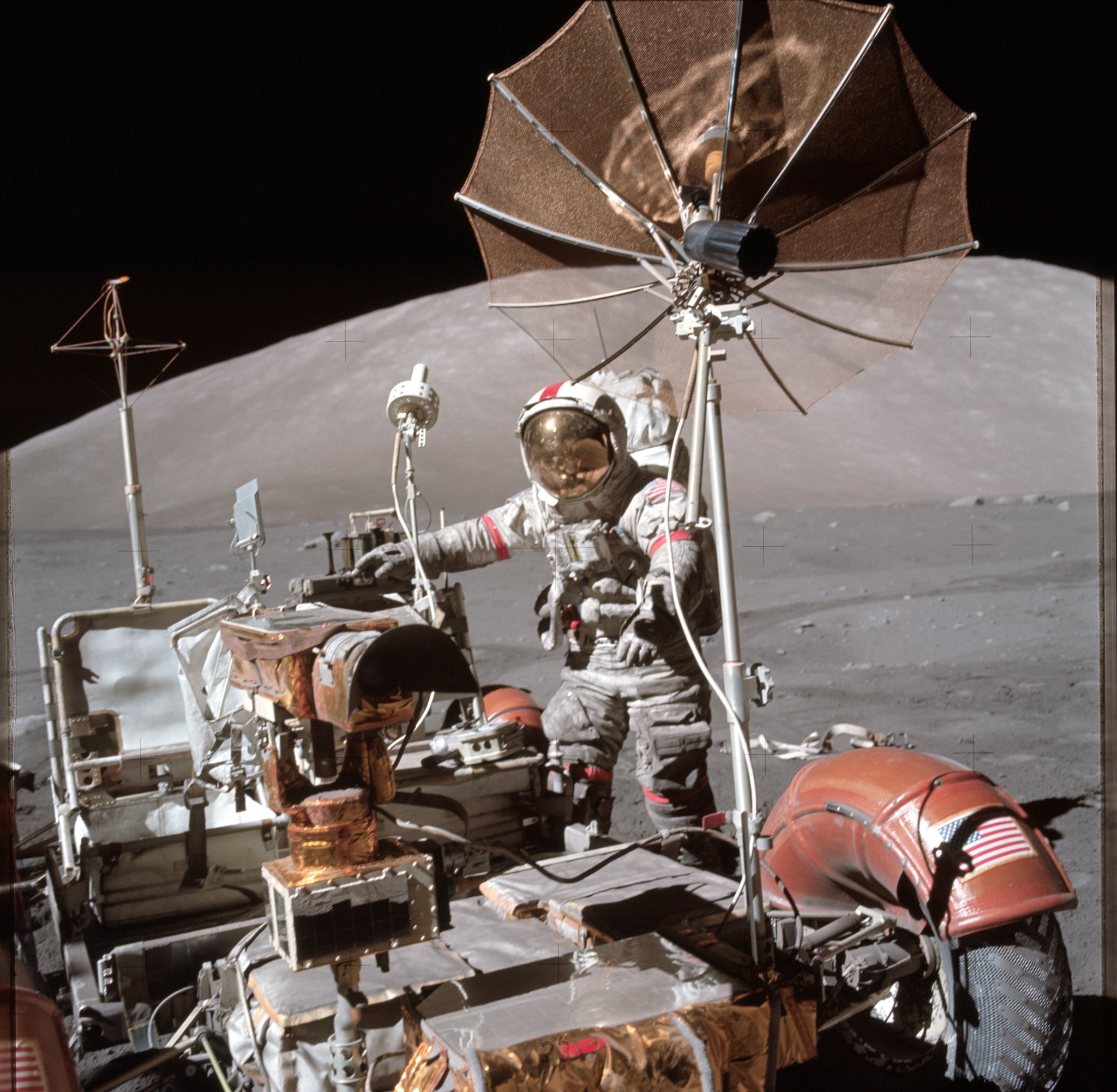
This week in 1972, the Apollo 17 crew returned to Earth following a successful 12-day mission. Apollo 17 marked the final crewed lunar landing mission. Here, Apollo 17 commander Eugene Cernan approaches the parked Lunar Roving Vehicle. NASA’s Marshall Space Flight Center designed, developed and managed the production of the Lunar Roving Vehicle that astronauts used to explore the Moon. Today, Marshall is developing NASA’s Space Launch System, the most powerful rocket ever built, capable of sending astronauts to the Moon, Mars and deeper into space than ever before. The NASA History Program is responsible for generating, disseminating and preserving NASA’s remarkable history and providing a comprehensive understanding of the institutional, cultural, social, political, economic, technological and scientific aspects of NASA’s activities in aeronautics and space. For more pictures like this one and to connect to NASA’s history, visit the Marshall History Program’s webpage. (NASA)



























